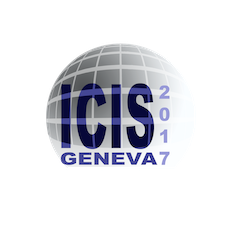Speaker
Description
Radioactive ion beam facilities produce radioisotopes for experiments that range from nuclear structure studies, astrophysics and medicine, to chemistry, biology or materials science. Following production, these exotic isotopes are ionized to enable acceleration into an ion beam for transportation, purification and delivery to experiments. There are some rather specific ion source requirements for radioactive ion beam production. Element selectivity is favoured over universality, efficiency typically dominates the desire to maximise ion currents and the ionization and extraction time should be minimized. Additionally, the emittance must be sufficiently low to facilitate the mass separation of the ion beam constituents and the transportation to experiments of the ions of interest.
To achieve this, multiple ion source types are employed, ranging from resonance ionization laser ion sources (RILIS) [1], to surface ion sources [2,3] and FEBIAD-type [4] arc discharge ion sources. Chemical selectivity can be achieved in FEBIAD and surface ion sources by tailoring component temperatures and/or materials [5,6]. RILIS offers chemical selectivity through ionization via sequential element unique atomic resonances. The laser atom-interaction region however, is typically a surface ion source, which can result in surface ionized isobaric contamination. To counter this, alternative laser atom interaction regions are being developed to offer enhanced chemical selectivity and experimental flexibility, these include repeller-ion guide-extraction systems [7] and coupling RILIS with FEBIAD-type ion sources [8]. The capabilities, applications and development prospects of these ion sources across ISOL-type radioactive ion beam facilities will be reviewed.
[1] V.I. Mishin, V.N. Fedoseyev, H.-J. Kluge, V.S. Letokhov, H.L. Ravn, F. Scheerer, Y. Shirakabe, S. Sundell and O. Tengblad. Chemically selective laser ion-source for the CERN-ISOLDE on-line mass separator facility. NIMB, 73(4):550–560, Apr. 1993. doi:[10.1016/0168-583X(93)95839-W].
[2] G.J. Beyer, E. Herrmann, A. Piotrowski, V.J. Raiko and H. Tyrroff. A new method for rare-earth isotope separation. NIM, 96(3):437–439, Oct. 1971. doi:[10.1016/0029-554X(71)90613-6].
[3] P.G. Johnson, A. Bolson and C.M. Henderson. A high temperature ion source for isotope separators. NIM, 106(1):83–87, Jan. 1973. doi:[10.1016/0029-554X(73)90049-9].
[4] R. Kirchner and E. Roeckl. Investigation of gaseous discharge ion sources for isotope separation on-line. NIM, 133(2):187-204, Mar. 1976. doi:[10.1016/ 0029-554X(76)90607-8].
[5] S. Sundell and H. Ravn. Ion source with combined cathode and transfer line heating. NIMB, 70(1-4):160–164, Aug. 1992. doi:[10.1016/0168-583X(92)95926-I].
[6] E. Bouquerel, R. Catherall, M. Eller, J. Lettry, S. Marzari, T. Stora and The ISOLDE Collaboration. Purification of a Zn radioactive ion beam by alkali suppression in a quartz line target prototype. EPJ ST, 150 (1) 277–280, Nov. 2007. doi:[10.1140/epjst/e2007-00323-4].
[7] K. Blaum, C. Geppert, H.-J. Kluge, M. Mukherjee, S. Schwarz and K. Wendt. A novel scheme for a highly selective laser ion source, NIMB, 204, 331–335, May 2003. doi:[10.1016/S0168-583X(02)01942-0].
[8] T. Day Goodacre, J. Billowes, R. Catherall, T.E. Cocolios, B. Crepieux, D.V. Fedorov, V.N. Fedosseev, L.P. Gaffney, T. Giles, A. Gottberg, K.M. Lynch, B.A. Marsh, T.M. Mendonça, J.P. Ramos, R.E. Rossel, S. Rothe, S. Sels, C. Sotty, T. Stora, C. Van Beveren and M. Veinhard. Blurring the boundaries between ion sources: The application of the RILIS inside a FEBIAD type ion source at ISOLDE. NIMB, 376:39 45, Jun. 2016. doi:[10.1016/j.nimb.2016. 03.005].
